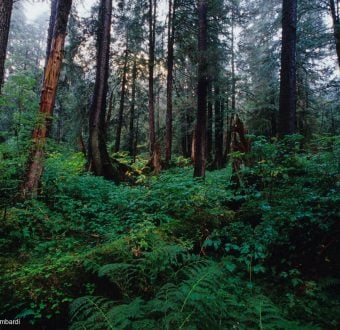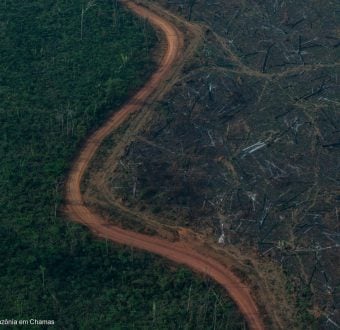By Richard George
The three biggest slaughterhouses in Brazil have taken one more step towards ending the cattle sectors involvement in deforestation in the Amazon – and with deforestation on the rise, that cant come soon enough.
Four years ago, JBS, Marfrig and Minerva – which make up 60% of cattle in the Amazon – agreed to stop buying cattle from farms that were clearing the Amazon. As part of that agreement, the cattle companies also agreed not to buy from farmers who were using slave labour or whose farms were established on indigenous peoples land.
In the years that followed, our campaigners in Brazil have been working with them to ensure that becomes a reality. It hasnt been the smoothest of journeys – and its not the sort of work that grabs the headlines – but despite a few hiccups they are making steady progress.
Its hard not to feel daunted by the challenge. Brazils cattle sector is simply enormous, as youd expect from a country whose economy is powered by agribusiness.
Cattle has been the main cause of deforestation historically, and still is. Nearly two-thirds of deforestation in the Brazilian Amazon is linked to cattle. There is precious little governance, a lot of corruption, and very few farms have signed up to the governments land registry.
So its not enough for companies to just say that they wont buy from farmers that are clearing the forest. They need to find out where forest destruction is taking place, work out who owns the farm and then ensure that none of their cattle ends up in their slaughterhouses.
All of which makes supply chain audits critical – which is why it is so important that theyve committed to making those audits much more transparent.
The companies have set up systems to control whose cattle theyre buying and to check that those systems are being followed. Theyre then audited by an independent company, which goes back and checks how well they are doing.
Until now, the results of those audits havent been automatically made public. Nor have they been standardised – which means that an audit of JBS isnt necessarily comparable with an audit of Marfrig or Minerva (or vice versa).
All of that is changing.
It took several meetings, but the slaughterhouses have now agreed a standard auditing protocol. And by the end of March 2014, they will make the results of their latest audit public, bringing some welcome transparency to the proceedings.
The slaughterhouses will also publish their plan to fully comply with the agreement they made, including milestones and deadlines. That way we – and their customers – can keep an eye on their progress.
Not only will everyone know if they are lagging behind, but well know who is ahead of schedule – and companies are likely to buy more beef from slaughterhouses which are ahead of the game.
All of which makes this commitment critical, and another welcome step towards ending the cattle sectors involvement in deforestation in the Amazon. Now its time for the other slaughterhouses to follow their lead.
Richard George is a Forests Campaigner at Greenpeace UK.

 zoom
zoom 
